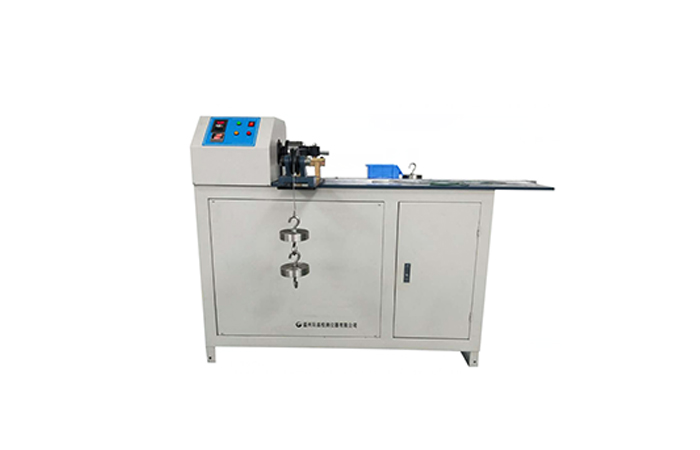【Scope of application】
It is suitable for measuring the ability of metal wire with a diameter or thickness of 0.5mm-6mm to withstand plastic deformation during the winding test.
【working principle】
1. The winding tester is to tightly wind the specified number of spiral turns on the core rod with the diameter specified by the relevant standards.
2. This experiment can also include special winding, unwinding and even rewinding.
3. The test equipment should be able to wind the wire around the mandrel, and make the adjacent coils closely arranged to form a spiral coil, or it can be wound by itself.
4. The wire used for testing can also be used as a core rod as long as it meets the required core rod diameter and has sufficient hardness.
【Standards compliant】
GB/T26941.1-2011 GB/T2976-2004 ISO 7802:1993 "Metallic Material Wire Winding Test Method"
【Features】
1. The test should generally be carried out at room temperature between 10°C and 35°C.
2. When the sample is used without any torsion, it is tightly wound on the mandrel in the direction of the helix at a specified speed of no more than one turn per second. If necessary, the winding speed can be slowed to prevent the temperature rise. To the test results.
3. In order to ensure tight winding, a tension force that does not exceed 5% of the corresponding force value of the nominal tensile strength of the wire can be applied to the free end of the sample during winding.
4. If it is required to unwind or rewind after unwinding, the speed of unwinding and rewinding should be as slow as possible to prevent the temperature rise from affecting the test results. At least one winding loop should be left at the end of the sample when unwinding .
5. The judgment of the winding test result should be carried out in accordance with the relevant standards. If there is no specific requirement, the surface of the sample can be inspected without magnifying tools. If no cracks are found, the sample is judged as qualified. For wires with a diameter or thickness of less than 0.5mm, the inspection should be carried out at approximately 10 times.
 Service hotline:
Service hotline: Receipt mail:
Receipt mail:

